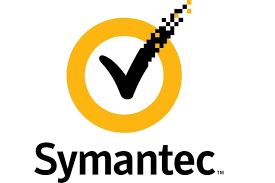
CT: What are the latest trends in information storage and management for the enterprise?
Kaura:Today, the explosion of information is challenging the existing solutions deployed in enterprises. With trends such as software defined datacenters and integrated backup appliances, expected to gain momentum and moreover as cloud based storage, backup and disaster recovery becoming commonplace, effective information storage and management will be a focus area for large enterprises and SMBs in the coming months.
CT: What are the key challenges for businesses in information management?
Kaura:The sheer volume of information and its continued growth is one of the main challenges for businesses. Though the volume of information generated, increases every year, IT budgets cannot keep up with the same and IT teams are expected to do more with the same staffing levels. At the same time, failure to properly secure and manage information is landing enterprise into trouble, because halting information flow means halting business. Information outages and data breaches are therefore common in the enterprise. To manage the avalanche of information, organizations should develop an effective information governance program, designed to provide top-down support for the intelligent maintenance of the company’s data requirements.
CT: How can enterprises adapt an effective information management strategy?
Kaura:While adopting the right technologies is vital in an effective information management strategy, there are a number of areas enterprises need to focus on. First of all, organizations should establish the C-level owner of information governance, who can build an information-responsible culture and create an umbrella of information governance to capture synergies across focused projects. CIOs and other decision makers can govern information to achieve business goals and overcome challenges. They should take a broader perspective of information governance and work outside of silos. Information governance should be high on the organization’s list of priorities.
Secondly, businesses should concentrate on focused projects such as eDiscovery, compliance, archiving and DLP besides having a powerful deduplication strategy for backups and archive. It’s also important to include security (in addition to retention and eDiscovery) as part of the strategy.
Finally, businesses should manage information according to its importance to your business by classifying information that are relevant and valuable for the organization.
CT: Tell us about Symantec’s latest offerings in Storage space.
Kaura:The growth of mission-critical data and applications, supporting real-time decision-making, is driving SSD adoption to increase performance within the data center. We recently announced a new version of our Storage Foundation software, Storage Foundation 6.1, which will enable data centers to leverage Solid State Drives (SSDs), in ways that could allow customers to access mission critical data and applications 400 percent faster than traditional Storage Area Networks (SANs). Similarly, another new solution NetBackup 7.6 has also been designed for enterprise level scale, which can accommodate hundreds and thousands of virtual machines and petabytes of data while giving customers 400x faster virtual machine recovery than a standard restore.
CT: What is Symantec’s growth strategy for next one year?
Kaura:The technology landscape is constantly evolving as the lines between physical and virtual infrastructures continue to blur, and we believe that we are equipped to capitalize on these developments and deliver the best solutions for our customers. Our Information Management strategy for the coming year broadly focuses on three areas – Availability, Protection and Insight. Each category has independent toolsets designed to efficiently serve our customers, while choosing the platforms that work best for their business. We will continue to focus on these aspects in the coming months.
